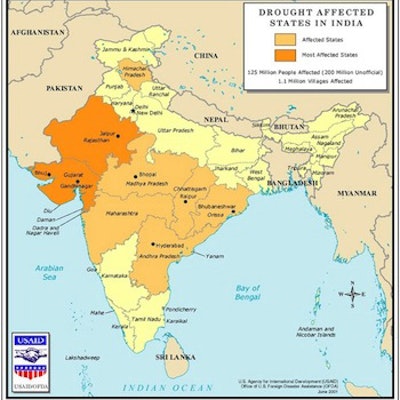
What some are now calling the “March Miracle,” a spate of El Nino-driven storms across the Western U.S., has delivered desperately needed relief to the region’s historic four-year drought, the most severe dry spell since records have been kept. Although more than 73 percent of California remains under severe to exceptional drought conditions, many of the state’s largest reservoirs are now at or above their historical averages while snow pack levels continue to rise, as well. Aquifers, however, which are even more critical to long-term supplies, remain badly depleted and will take years of normal or above-normal rainfall to replenish.
Although long-term climatic computer models point to increased risk of pro-longed drought in the near future, for now at least, most of the western U.S. will be less vulnerable to immediate shortages. In California, statewide conservation mandates remain in place.
The cautious optimism in the Western U.S. stands in stark contrast to current conditions in one of the Eastern hemisphere’s largest swimming pool markets, which is also experiencing historic drought and as a result increasingly draconian conservation requirements. In India, the state government of Maharashta, far and away India's most affluent state and second most populous, has directed all municipalities to shut down all swimming pools and stop supplying water to waterparks until the the state — which includes Mumbai, India’s capital — receives much-needed rain that is hoped to arrive during the upcoming monsoon season.
Water Resources Minister Girish Mahajan said that local governments have been asked to give priority to drinking water, part of which means indefinitely closing down pools and water parks. “There is only 25 per cent water left in Maharashtra’s dams, while in the Marathwada region, the water level has gone down to just 5 percent,” he explained in comments that have been circulated via numerous online sources. “Nobody can be allowed to waste water and every drop of water has to be saved.”
Many of the state’s reservoirs are currently well below 10 percent capacity, some are effectively empty with less than 2 percent. Plans to reopen pools and water parks are entirely contingent on seasonal rains.





































